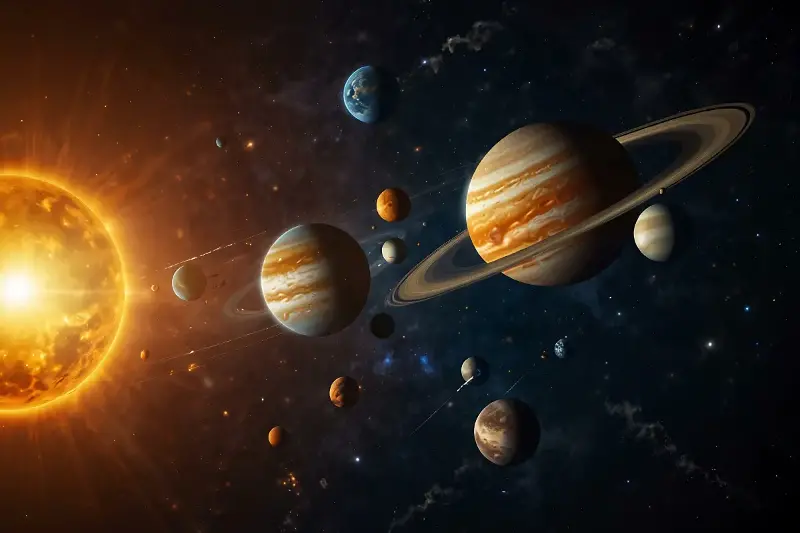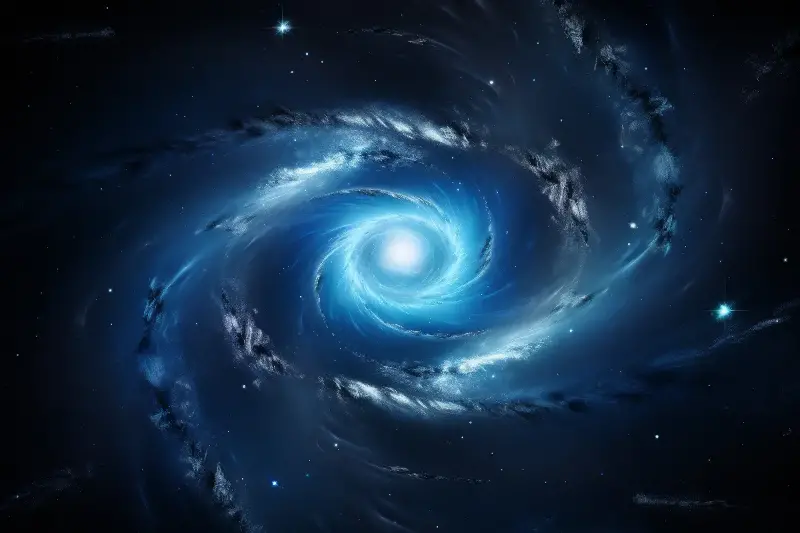From the delicate pirouettes of planets to the grand waltz of the entire galaxy, our universe is a stage where celestial bodies perform a complex and mesmerising dance. This intricate choreography is not random; it is governed by the fundamental laws of physics and the gravitational pulls of countless cosmic actors. The story of Earth and our solar system is deeply entwined with these cosmic forces—a dance that has been unfolding for billions of years.

How Gravity Sets Everything In Motion
At the heart of every cosmic dance lies gravity. Isaac Newton’s famous apple episode led to the realisation that every object in the universe attracts every other, and the result is orbits. While it’s tempting to imagine planets as mere passengers circling the Sun, the truth is far more captivating. Both the Sun and its planets actually orbit around a mutual centre of mass, called the barycentre. Sometimes this point lies just outside the Sun's surface, subtly shifting its own position in response to the tugging of its planets—especially the massive Jupiter.
For Earth, gravity from the Sun keeps us on a stable elliptical path, sweeping out nearly 940 million kilometres every year. But this gravitational tie is felt by everything in the solar system. The Moon, for example, is gradually receding from Earth, currently at a rate of about 3.8 centimetres per year, due to tidal interactions. Over millions of years, this tiny change will alter the length of Earth’s day and the rhythm of lunar eclipses.
Planets Dancing In Resonance
Planets don’t just orbit in isolation; they influence each other in fascinating ways. One of the most enchanting cosmic choreographies is orbital resonance—a phenomenon where two or more bodies exert regular, periodic gravitational influence on each other, often locking into neat ratios. Consider Jupiter’s moons: Io, Europa, and Ganymede. Every time Ganymede completes one circuit, Europa finishes two, and Io zips around four times. This perfect 1:2:4 resonance ensures that their gravitational pulls are harmonised, shaping not just their paths, but their very geology.
Our own planet is not exempt. Jupiter’s mighty gravity plays a major role in protecting Earth by scattering hazardous asteroids and comets away from the inner solar system. Some astronomers even call Jupiter our “cosmic vacuum cleaner.” Without this giant planet’s intervention, our planet might have faced far more deadly impacts.

The Shape Of Orbits And Their Cosmic Causes
Orbits are rarely perfect circles. Most actually trace elongated ellipses. The shape of an orbit, known as its eccentricity, is sculpted by countless nudges—from neighbouring planets, passing stars, and even the gravitational pull of our entire galaxy. When a passing star comes close to our solar system—“close” in astronomical terms can be trillions of kilometres away—it can tweak the orbits of comets in the distant Oort Cloud, sending some hurtling towards the Sun in long, dramatic journeys.
Earth’s own orbit slowly changes shape every 100,000 years or so, in a cycle called Milankovitch cycles. Combined with the tilt of our axis and the wobble known as precession, these cycles are key drivers of the planet’s ice ages. The movement may be gradual, but the consequences are dramatic—a testament to the long-term influence of the cosmic choreography on life itself.
The Hidden Influence Of Gravitational Tides
While most people are familiar with ocean tides, few realise that celestial tides shape the larger universe, too. When one body orbits another, their gravity distorts each other's shape, creating “tidal bulges.” On Earth, this mostly shows up in our oceans, pulled by the Moon. But in space, tidal forces can stretch and squeeze entire worlds.
Jupiter’s moon Io is the most volcanically active place in the solar system, and it owes this to tremendous tidal heating, as Jupiter’s gravity relentlessly flexes it with each orbit. Saturn’s moon Enceladus hides a global ocean beneath its icy crust, kept warm by these same tidal rhythms. Even Earth experiences a tiny tidal drag, very slowly decreasing the speed of our planet’s rotation as our days lengthen millisecond by millisecond over eons.

Chaos, Collisions, And The Birth Of Worlds
The dance of orbits is not always smooth. Sometimes, the ballet turns chaotic. About 4.5 billion years ago, our solar system’s formation was a chaotic frenzy: dust and gas coalesced, while countless proto-planets collided in fiery impacts. One such cataclysmic collision with a Mars-sized body gave birth to our Moon—a stunning example of cosmic violence sparking something beautiful.
Today, the solar system is much more stable, but resonances and close encounters still occasionally fling asteroids onto new paths or cause comets to blaze across our night sky. Even galaxies themselves merge and collide, reshuffling billions of stars and creating entirely new forms.
The Cosmic Significance Of Our Orbits
Why do these celestial patterns matter to us on Earth? Besides providing us with spectacular meteor showers, eclipses, and auroras, the cosmic dance of orbits has shaped the very conditions that give rise to life on our planet. Without the regular rhythm of day and night, the changing seasons caused by Earth’s tilt and orbit, or the protection offered by massive outer planets, our world would be an entirely different place.
Space missions, too, take full advantage of orbital mechanics, using intricate slingshots around planets to save fuel and time. The most ambitious space explorations, from the Voyager probes to the James Webb Space Telescope, exploit gravity’s graceful dance to journey far beyond what would otherwise be possible.
Stepping back, understanding the intertwined orbits of cosmic bodies gives us profound perspective—not just on the mechanics of our solar system, but on the unity and beauty of the universe itself. We are passengers on an ancient, ongoing ballet, one that continues to inspire wonder as we gaze into the starry night.
